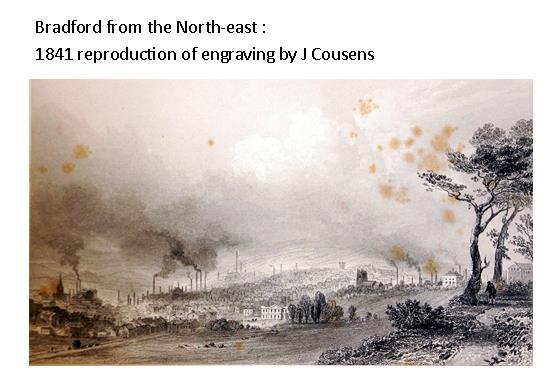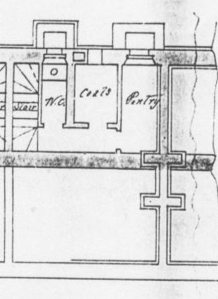April 2022
Welcome

After a break, the rediscovering Ripleyville blog, is again open to visitors. The site went private to allow some time for thinking and planning.
New demands on the site, renewed interest and newer web and social media capabilities mean that the way the Victorian history of Ripley Ville is communicated needs to change.
Ripleyville as heritage and family history; how the name ‘Ripleyville’ is thought of, its place in history, how its buildings and residents are remembered, how residents’ memories are recorded all need to be reviewed.
The demolition and replacement by Accent Housing Association of the mix of housing that have been known as Ripleyville since 1976 and local news coverage make the task more urgent.

rRV Blog : Time-capsule
The rRV blog is a time-capsule. There was an ambitious programme for future blogs set out in 2017 but regular updating of the website stopped the year before; nearly 7 years ago. So, as at today. 2nd April 2022, the rRV blog contains none of the findings from research on Victorian Ripley Ville that has been done in those 7 years. That also needs to be remedied.
Newer findings and thinking about Victorian Ripley Ville, about Bowling Dyeworks and the Ripley family show just how central they were to the growth of Bradford from a town of squalor, conflict and chaos in the 1840s. Over the next thirty years cutting-edge ways of making and dyeing worsteds changed it into a town that was renowned and praised as ‘Worstedopolis’. The original Bowling works that grew from the ‘dyehaase’ of the 1830s, the ‘New Dyeworks’ and what was done in them put the Ripleys at the centre of these changes. New cloths, entirely new articles in the market, made huge profits for the leading manufacturers and dyers.
From their super-profits, merchants, manufacturers, and other magnates from Bradford pitched their schemes to combat the town’s’ many ills. Through the 1860 and 1870s, they funded or part-funded projects to improve living conditions, moderate worker behaviour, or contribute to the health of the town.
Victorian Bradford in Microcosm
Victorian Ripley Ville was one such scheme. Importantly, it was worked up from within the conditions that applied in Bradford. It was not part of an outward movement of mill, workers and their families to a green-field site, like the industrial model village of Saltaire.
Rich and powerful men making money in the town harboured political ambitions with even more say in how the town was run.
Political cartoon c. 1868
Bradford shown as a hatchery for the ambitions of rich and powerful men.

Sponsors, like Henry William Ripley with Ripley Ville, left indelible personal marks on their schemes. A village is, however, a complex mix. Issues of the day for Bradford people; extension of the right to vote for workers, elementary schooling for their children, standards of decent behaviour, temperance, disease prevention, the proper roles of men and women, religious beliefs and non-belief, party politics, Irish politics, the clash of styles in architecture, they all left their marks on Victorian Ripleyville. The village, its industrial setting, the reasons it was built and what was planned and built there between 1864 and 1882, provided a record of a town that had become ‘Worstedopolis’. The village was mid-to-late Victorian Bradford in microcosm.
rediscovering Ripley Ville : the Beginning after the End
A previous post announced ‘the Beginning of the End’ for the rediscovering Ripleyville blog; the slow retirement of the blog while I carry on with research and writing. This post set out what comes after – A New Beginning!
Or is it?
The Ripleys’ use of water in the Bowling valley,Titus Salt & the Bowling Tough : early 1850s
Before Ripley Ville was built. More on the Ripleys’ use of water from Bowling Beck and elsewhere from the Bowling valley in the early 1850s, the complaints of Walkers Co against them and the connections to Titus Salt and the ‘Bowling Tough’.
Copyright R L (Bob) Walker 2016 All rights reserved.
The Ripleys’ use of the water of the Bowling valley, Titus Salt and the Bowling Tough : early 1850s
Previous post & this post
I have had a bit more time to look at the archive documents related to the case of Wood & Walkers and the Ripleys in the early 1850s. This post is a follow up to the previous one. I have updated that one from when it was first published last month on April 1st. It now conforms with the newer information. This helped to firm up the date for the original parts of the affidavit of Benjamin Murgatroyd. As Superintendent of Bowling Dyeworks, he had first-hand information about changes at the Works and their use of water and dyewares in worsted dyeing between 1830s and early 1850s; information not available elsewhere.
This post goes into more detail on;
- the grounds for the complaint and the court case of John Wood, William Walker and Charles Walker (Walkers & Co) against Edward and Henry William Ripley (the Ripleys)
- and the defense of the Ripleys’ actions as prepared by their solicitors.
Titus Salt became involved in an earlier case, a more general objection by Bradford’s worsted manufacturers to the Ripleys’ actions in 1853 and more directly in the case of Walkers & Co and the Ripleys.
The ‘Bowling Tough’, so called, played a part in the Ripleys’ defense.
Benjamin Murgatroyd & Bowling Dyeworks 1835 to 1855
Before Ripley Ville was built. In this post; a first-hand description of changes to Bowling Dyeworks and worsted dyeing from Works’ Superintendent and practical dyer, Benjamin Murgatroyd, circa 1835 to 1855 and evidence on how Bowling Beck was used and misused.
Copyright R L Walker 2016 All rights reserved
This nearly had to be a post about not doing a post. Its seven weeks since the last one. I have been reviewing archive documents for south Bradford, covering the ten years 1852-1862 and related to the ‘Water Dispute, Messrs Ripley v. Bradford Corporation’ . It has been a long slog and I’m still not finished. I was planning to post an apology explaining the silence, then on Monday last week I had a jack-in-a-box moment. From all the archive boxes and documents over the previous weeks one just jumped out at me.
Benjamin Murgatroyd & Bowling Dyeworks 1835 to 1855
The Water Dispute
The document was in a group of papers connected to the ‘Water Dispute’ but not directly involved in the Ripleys’ dispute with Bradford Corporation. The Dispute itself was about water supply in Bradford; who should have control of it and how best the town could be served. At its heart was the gap between the needs of the town and what was available.(1) The engineer J F Bateman (1810-1889), fresh from working on the water supply of Manchester, reported in 1852 that there was a twenty-fold gap. Where supply was around half a million gallons a day, from Bradford Waterworks, he calculated that between ten and twenty million gallons a day would be needed for all the town’s needs. In a series of letters he outlined the works and costs of getting to that level of supply.(2)
Affidavit of Benjamin Murgatroyd
The Document
The jack-in-a-box document was the draft of an affidavit, in manuscript form, with crossings out and additions in a second and possibly a third person’s hand.(3)
Unsigned and undated in this draft form, it’s opening paragraph – before crossing outs and additions – stated;
1836 : H W Ripley as SWCI, the Moulsons, their mark and a [Master] Carpenter and Joiner.
This post is about a very early Victorian water-closet. It establishes the time over which the Ripley’s were putting water-closets into their properties by going back to 1836 to look at Bowling Lodge. This was the home of Edward and Hannah Ripley, parents of Henry William Ripley, who was the main sponsor for the Victorian industrial model village of Ripley Ville. It adds just a little to what we know about the Moulsons who built much of Ripleys Mills, gives the specification for the enclosure of the water-closet and the cistern to be made in Bowling Lodge and identifies who is trusted with its making.
Copyright R L (Bob) Walker and/or rediscoveringripleyville.wordpress.com 2015. All rights reserved (see column left for details)
Another Day at the Archives
Bowling Lodge
Another day at the archives. Right at the end I just had time to look at the ‘Specification for a Dwelling House’ (NB3700901) that became Bowling Lodge; the home of Edward and Hannah Ripley. (1) The client for the work is their son, the twenty-two year old Henry William Ripley. The architect responsible for drawing up the specification was Walker Rawstorne. George Sheeran describes him ((1990 : 72) as most active in Bradford between 1830 and 1850 and, interestingly, as using, ‘Neo-classical styles for domestic architecture.’
Wikipedia on Victorian Ripley Ville : wrong! wrong! wrong!
The account on Wikipedia is wrong on a number of crucial points about the worker’s housing built between 1866 and 1868 in the Victorian industrial model village of Ripley Ville, These relate to whether water-closets were installed in each of the 196 Working -mens Dwellings”, on the village’s northern site in Bowling, south Bradford. The errors are identified in this post and a better version of events laid out. The post starts with a RVr news update. It ends by emphasising how regrettable the demolition of the village’s northern site is, in heritage terms.
Copyright R L (Bob) Walker 2015 and/or rediscovering Ripleyville. All rights reserved. (see sidebar right)
News Update
Work on the new ‘Ripley Ville rediscovered’ (RVr) web-sites on the Victorian industrial model village of Ripley Ville is behind schedule.
Time has been given over instead to exploring several long trails in archival material about the village’s Victorian beginnings. The searches have focused on the water-closets that are understood to have been built in the basements (cellars) of the 196 Workmens Dwellings of the village.
The water-closet controversy : its importance
If water-closets were installed this would make the houses, in their sanitary status and arrangements, the most advanced then built for the working classes. When taken together with the number installed, this would significantly enhance the importance of Ripley Ville as an industrial model village and of ‘Messrs Ripleys scheme…’ for workers housing.
Ripley Ville : 150th Anniversary today
Bradford’s only industrial model village, Ripley Ville, has the 150th anniversary of its founding today, 15th November 2015. The village was unique : each and every one of its 196 workman’s dwellings, built between 1866 and 1867, had a water-closet in its basement.
150th Anniversary
Today is the 150th anniversary of the event in 1865 in south Bradford that promoted ‘Messrs Ripleys scheme for building a number of Working-Mens Dwellings’. The event was a public meeting that took place in Edward Ripley & Son’s Patent Melange Works on Spring Mill Street, west Bowling on the 15th November 1865. At it, a prospectus was made available to those attending and the planned scheme for up to 300 dwellings of three types was explained. From the 20th of November 1865 draft plans of the dwellings were available ‘between Six and Eight O clock’ until ‘Friday 1st December’. In this case ‘Tickets of admission [were] to be had of Messrs Ripley and at the Melange Works’.
Ripples build and other News
This is a very short post giving news of;
- an upcoming Textile conference,
- two posts that have had their passwords removed
- and the connection between pain, pus, poison and aniline dyes




Recent Comments